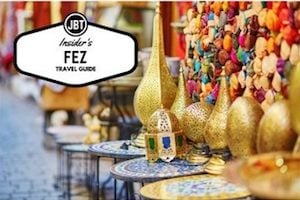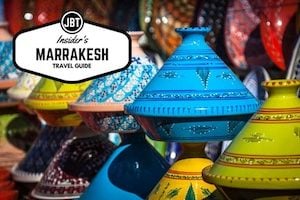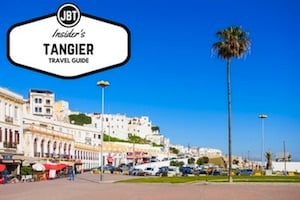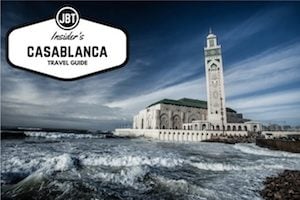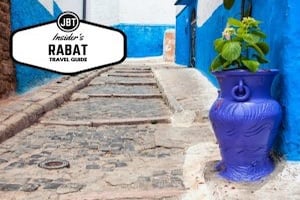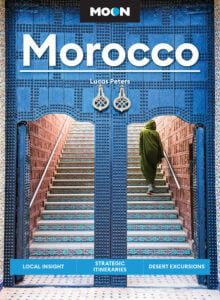
We know that visitors and armchair tourists love to ooh and ahh over Morocco’s unique doors and bright colors. We also know that the architecture and design elements found here are unparalleled. Today take a visual journey through some examples of Morocco’s most stunning architecture.
Amazing Moroccan Architecture

Ait ben Haddou, Ouarzazate
The ancient ksar (group of fortified kasbah’s) of Ait ben Haddou is a UNESCO World Heritage Site and has been used as a location set for many blockbuster films including The Mummy (1999), Gladiator (2000) and Babel (2006). It stands at one side of the Ounila Valley along the old caravan route from Marrakesh to the Sahara.

Armed village, near Imlil, High Atlas Mountains
Treks around the Imlil region of the High Atlas will provide amazing scenery and examples of Berber mountain village architecture, with hundreds of small villages nestled back up into the dramatic mountainsides. Armed village is located close to Mount Toubkal making it the perfect place for climbers wanting to summit North Africa’s highest peak.

Bahia Palace, Mellah, Marrakesh
Built with the intention of creating the greatest palace of it’s time, the Bahia Palace is ‘the palace’ to visit in Marrakesh if you’re only going to visit one during your time in the red city. It was constructed in two different stages by two different generations; Si Moussa and his son, giving it an irregular layout and a range of architectural influences.

Hassan II Mosque, Casablanca
The largest mosque Morocco (and the 13th largest in the world) with the tallest minaret in the world. It was completed in 1993 and stands on the Northern Atlantic coast of Morocco, looking back over the Casablanca city line. Designed by Michel Pinseau and built by the Bourgues, the minaret is 210 metres high and has a laser at the top which is directed towards Mecca.

Cap Spartel Lighthouse, Tangier
This lighthouse stands on the promontory of Cap Spartel, looking out across the Strait of Gibraltar. On a clear day, it is easy to see Spain and Gibraltar from this point. It the is most northwestern point of mainland Africa. A visit to Cap Spartel is best incorporated with a drive via the grand palaces and more exclusive suburbs of Tangier. It is not possible to go inside the lighthouse, but it is still worthwhile heading out to this area, with Plague Robinson just to the south and the Cave of Hercules only 5km away.

Jardin Majorelle, Marrakesh
A stunning botanical garden in the heart of Marrakesh with a beautifully vivid blue and yellow edifice designed by Jacques Majorelle in the 1920’s and 1930’s. The gardens are also home to a Museum of Islamic Art which include artwork by Jacques Majorelle and a very decent, although slightly pricey café. It’s best to visit early in the morning or late afternoon before large tour groups arrive. The gardens have since been owned by Yves Saint-Laurent and Pierre Bergé and Laurents ashes were scattered in the gardens.

Round Minaret, Moulay Idriss
Besides being home to the Mausoleum which is the burial place for Moulay Idriss I, the person who originally brought Islam to Morocco, Moulay Idriss is also famous for another religious structure; the only round minaret in Morocco. Added to it’s much older connecting mosque in 1939, the design is very unique throughout the Islamic world. It’s tiled patterns depict a Sura reading from the Koran and is connected to the Idriss Medersa inside the medina; an old and very important Koranic school inside the sacred medina.

Telouet Kasbah ceiling, Atlas Mountains
Telouet stands at the end of the Ounila Valley to Ait ben Haddou, along the old caravan trading route between Marrakesh and the Sahara. Once home to Thami El Glaoui – Pacha of Marrakesh, the building sadly now stands in ruins and is slowly dilapidating with little efforts to restore it. Some rooms are still in good condition, showcasing mosaic zelij displays which are argues to be some of the finest Islamic architecture and design in Morocco. The ceiling of the main room features a glass ceiling and wood made from cedar.

Fez Medina
The old medina of Fez is another stunning UNESCO World Heritage protected site and is considered to be the best preserved example of a medieval medina in the Arab world. It’s labyrinth of streets are notoriously difficult to navigate and most of it’s layout, madrasas, fondouks, palaces, mosques and fountains date back to the 13th and 14th centuries, when Fez was the capital city of Morocco. The heart of the medina is full of amazing Arab and Al-Andalus architecture and design, with a high concentration of stunning mosaic zelij displays.

Volubilis, Walili, Moulay Idriss.
Volubilis (or Walili in Moroccan Arabic) is an ancient settlement which has been occupied by Amazigh and Roman ancestors. UNESCO protected Roman ruins remain to dominate the site and are an exceptionally well preserved example of a Roman colonial town in North Africa. A visit to the ruins are best incorporated with an overnight stay in Moulay Idriss; Morocco’s most sacred medina, only 3km from the ruins.

Colonial French Cottage, Ifrane
‘Ifran’ means cave in the local Amazigh dialect and refers to the Berber ancestors who originally inhabited caves in this region. Although there are no cave dwellings left in Ifrane itself, there are still many families living in troglodyte (cave) dwellings across the Middle Atlas plateau, mainly in nearby Bhalil. The modern town of Ifrane was built by the French during occupation in 1928 and is known as the ‘petit swiss’ of Morocco, referring to it’s architecture which is resembles a mountain town in Switzerland. It is also referred to as the garden of Morocco due to it’s green scenery, cedar forests, Alpine climate and seasonal change. Often skipped by travellers to Morocco due to it’s association with not being traditional, the Ifrane and Azrou National Park and cedar forests hold some of Morocco’s most stunning scenery and Middle Atlas towns and villages, with the Barbary Macaque also being a local resident.

Mediterranean Moroccan architecture, Sidi Ifni
Sidi Ifni is a sleepy fishing village in the south of Morocco with a mediterranean feel. It’s history of Spanish occupation (as part of the Treaty of Tangiers) played a key role in Spain securing it’s hold on the Western Sahara. Mediterranean and Spanish influences to the architecture can found in many buildings throughout the town and the stunning natural arches of Legzira beach are lie just north of the town.

Amtoudi Lookout, Guelmim
This old observation post stands nearby to the Amtoudi Granary (Agadir Id Aissa) and is a tremendous example of strategic defence techniques used by Amazigh ancestors. The viewpoint looks out over the desert and oasis surroundings preventing anyone from being able to attack the Amtoudi granary (Agadir) by surprise. Agadir Id Assia is considered to be the best preserved agadir in Morocco, keep following our blog for an upcoming post about these incredible structures and scroll down to see an example of a granary building located near Taliouine.
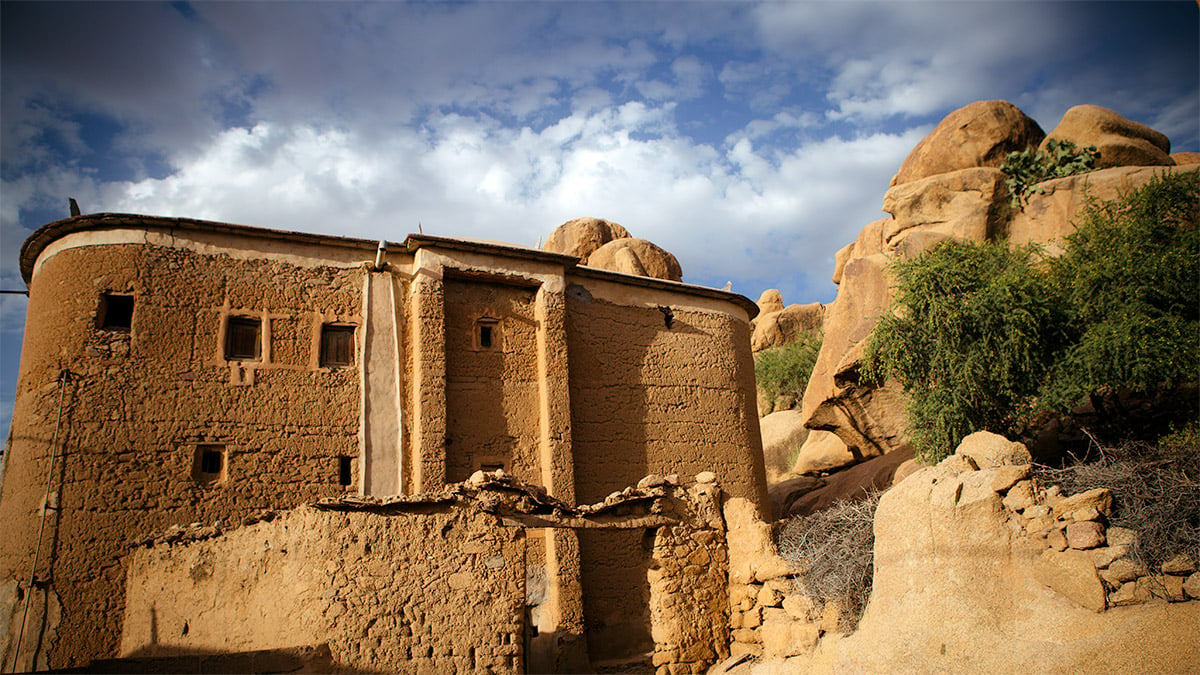
Traditional Berber House, Tafraoute, Souss-Massa-Draa
Tafraoute lies in the centre of the Anti Atlas mountain range and is the perfect place for trekking, cycling and rock climbing. The region has strong Amazigh roots and is made up of hundreds of tiny Berber villages with homes built back up into the rocks and even resembling the rock formations themselves. A rock escarpment named Napoleons Hat looms over the town and it is also home to a surreal modern art feature where large rocks have been doused in vivid blue, red, white and pink paint by Belgian artist Jean Veran (which took over 18 tonnes of paint to create).

Hassan Tower, Rabat
The Hassan Tower is actually an unfinished minaret for a mosque which was never fully constructed. It was built in 1195 with the intention of being the largest minaret in the world, but construction stopped when Sultan Yacub al-Mansour died. Built from red stand stone, the tower reached 44m high and a few of the mosque walls were built before construction ceased, as well as 200 columns intended to be support for the mosque.

Mediterranean Moroccan Window Shutter, Asilah
Influences of the Mediterranean can be found in architecture all across the Atlantic and Mediterranean coastlines of Morocco and there is no finer example of a medina with a Spanish and Portuguese feel than Asilah. Painted white with decorative blue tones, Asilah even has the feel of being Morocco’s own answer to Santorini. The town is famous for holding an Annual Arts Festival and each summer, large sections of the medina are white washed back to a blank canvas for international artists and the local community to paint new murals. The medina has seen Roman (ruins can be found in the nearby town of Larache), Arab, Portuguese, French and Spanish Occupation and it’s rampart walls remain fully intact.

University of Al Quaraouiyine, Fez
This religious school in the heart of the Fez medina was founded in 859 by Farima al-Fihri and is the oldest existing, continually operating educational institution in the world. It is now fully incorporated into Morocco’s modern state university system and focuses on teaching Islamic religious and legal sciences, Classical Arabic and Maliki law. It’s horse shoe shaped arches and ‘ijmiz’ frames are decorated with geometric and floral Andalusian artwork and Kufic calligraphy.

Octagonal Minaret, Tetouan
Tetouan served as an important middle ground between Morocco and Southern Spain during the 8th century and was largely built by Andalusians who had been expelled by the Al-Andalus of the Spanish Reconquista. Like Fez, the entire old medina of Tetouan is a UNESCO World Heritage site and is also home to a high concentration of mosaic and zelij displays. Lying only a few miles from the Strait of Gibraltar, Spanish is widely spoken by the people of Tetouan, which is also still home to small Christian and Jewish communities. The north of Morocco is home to a handful of octagonal minarets (as opposed to the traditional single square design), which can also be found in Chefchaouen, Ouezzane, Asilah, Rabat and Tangier and reflect the mix of culture and heritage to the northern regions.

Rennovated riad architecture, Marrakesh
One of the best ways to start and end your adventure in Morocco is by staying in a luxury riad in the heart of a beautiful medina like Marrakesh or Fez. Traditionally, a Moroccan ‘riad’ is a house or palace with a small garden or courtyard and an open roof at the centre. The word riad actually comes from the Arabian term for garden (ryad). This style of architecture is thought to date back to the Idrisid Dynasty and to have taken influence from the ancient Roman city of Volubilis, which incorporated water pools inside buildings to cool down spaces during the summer.

Tinmal Mosque, High Atlas mountains
Tinmal was built in 1156 to commemorate the founder of the Almohad Dynasty, Mohamed Ibn Tumart. It soon became the centre of the Berber Almohad empire and served as a strategic base for the Almohads to draw plans for attacks against the Almoravids. It is one of the only mosques in Morocco which non muslims can enter, alongside the Koutoubia in Marrakesh and the Hassan II Mosque in Casablanca. The Koutoubia was largely influenced by Tinmals’ design.

Colourful Arches, Mirleft
Mirleft is another sleepy fishing village in southern Morocco with large amounts of untouched coastline and wild beaches. Life here is so laid back it’s pretty much horizontal and there is not much to do except chill out, swim or surf at one of it’s many beautiful beaches. Most of Morocco’s boutiques and shops lie under well shaded pathways and alleys inside the medinas like this. These colourful archways are a common design for creating a shaded walkway in between shops and the main road in Southern Morocco and Saharan towns.

Kasbah, Kelaat Mgouna, Dades Valley
The town of Kelaat Mgouna has many crumbling kasbah and ksar dotted through it’s valley. This kasbah is located early along the road leading out to Bouthagar, nestled among the green oasis of walnut, fig and apple trees with views of Jebel (Mount Mgoun). Kelaat Mgouna is also famous for it’s annual Rose Festival, which celebrates it’s cultivation of the Rose flower for rose water and oil production.

Village facing Tetouan, Rif Mountains
The road between Meknes and Tetouan is one of the most stunning drives in Morocco. Taking you past Moulay Idriss and Volubilis (see above), Zagota, Ouezzan and the blue-washed medina of Chefchaouen, the journey is best made in spring (April/May) when the wild flowers are in full bloom and the scenery is still vivid green from the early rains. This village lies facing the main medina of Tetouan and like so many medinas along this route, it’s shape resembles the mountainside it is built into.

Ifri Granary, Taliouine, Souss-Massa-Draa
This agadir (granary in the Amazigh Tamazert language) is located just outside of Taliouine and is one of our favourite granary structures in southern Morocco. These buildings were constructed by Amazigh ancestors to keep harvests and possessions safe and secure and in optimum storage conditions. They can be found all over the Southern and Middle regions of the Atlas mountains. Keep following the blog for a special multimedia post to find out more about these incredible structures.
Would you like to see these architecture examples up close and personal? We can help you book your trip to Morocco – today! Our team of on-the-ground local experts will help craft a personalized tour for you.

